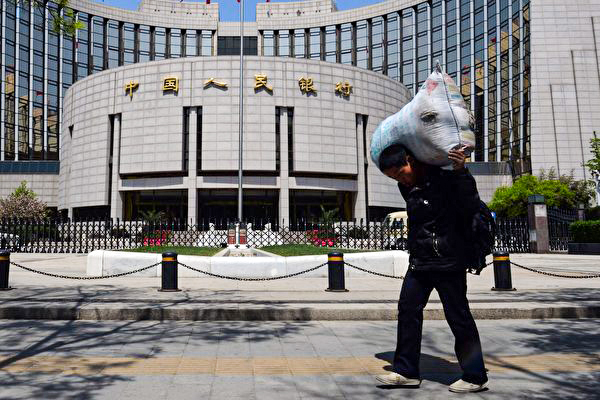On Monday (July 1), the People’s Bank of China suddenly announced the launch of national debt borrowing operations, causing a sharp drop in national debt futures across the board. Analysts believe that the authorities are officially beginning to print money without a financial anchor.
At noon on July 1st, the People’s Bank of China issued a public market business announcement stating that in order to maintain the operation of the bond market, after observing and evaluating the current market situation, they have decided to conduct national debt borrowing operations for selected primary dealers in the near future.
As a result, national debt futures saw declines across the board, with the 30-year main contract falling by 1.06%, the 10-year main contract dropping by 0.37%, the 5-year main contract declining by 0.24%, and the 2-year main contract decreasing by 0.08%.
The “Lao Man Channel,” which tracks Chinese economic data long-term, analyzed on the social media platform X, stating: “Finally, we have reached this point. I have said many times that under China’s financial system, the central bank buying national debt in any form, whether in the primary market or secondary market, signifies the beginning of printing money without a financial anchor. There is no distinction.”
Remember this moment, July 1, 2024, as China officially begins the era of printing money without a financial anchor.
He further explained, “In practice, the central bank borrows national debt and then sells it, which appears to put pressure on the price of the national debt. However, the central bank must buy national debt in the market to repay the batch it borrowed previously. In other words, technically, the legal barrier for the central bank to directly purchase national debt has been broken. Henceforth, the central bank can directly and massively purchase and hold national debt.”
Article 29 of the 2003 version of the “People’s Bank of China Law” currently stipulates that “The People’s Bank of China may not overdraw government finances or directly subscribe to or underwrite national debts and other government bonds.”
On the eve of the Chinese New Year in February of this year, the “Lao Man Channel” expressed concerns about China’s economy, stating that the issues China is currently facing are insurmountable and immediate, with 2023 barely getting by and 2024 likely facing a comprehensive outbreak of problems.
The anchor of the Chinese yuan was foreign exchange before 2015, where the surplus of foreign exchange earned through foreign trade was exchanged for by the central bank, and the central bank printed the yuan as a result, forming foreign exchange deposits as a core asset of the central bank. After 2015, foreign exchange began to flow out continuously, and the central bank could no longer print yuan by exchanging foreign exchange. Foreign exchange also ceased to serve as the anchor for the yuan.
As a result, the anchor of the yuan shifted to debt, with the central bank printing money to lend to commercial banks, which in turn lent this money to government entities and individuals, forming a “debt-anchor” model.
However, the key to the debt-anchor model is ensuring the credit of the debt, where borrowed money must be repaid, forming a closed loop. But if a large-scale default by the ultimate borrowers occurs, and they no longer repay their debts, the entire chain of money printing breaks, and the anchor of the currency is lost.
He mentioned that individual debt is already on the brink, with drastic decreases in people’s income, raising significant doubts about whether they can repay their mortgages. Regarding corporate debt, defaults are no longer surprising news. As for government debt in the urban investment sector, no one would be shocked by any size of default. This indicates that a large-scale debt default is imminent, and the debt loop is about to be broken. Subsequently, the central bank continuing to print money to lend to commercial banks will translate into printing money without a financial anchor.

